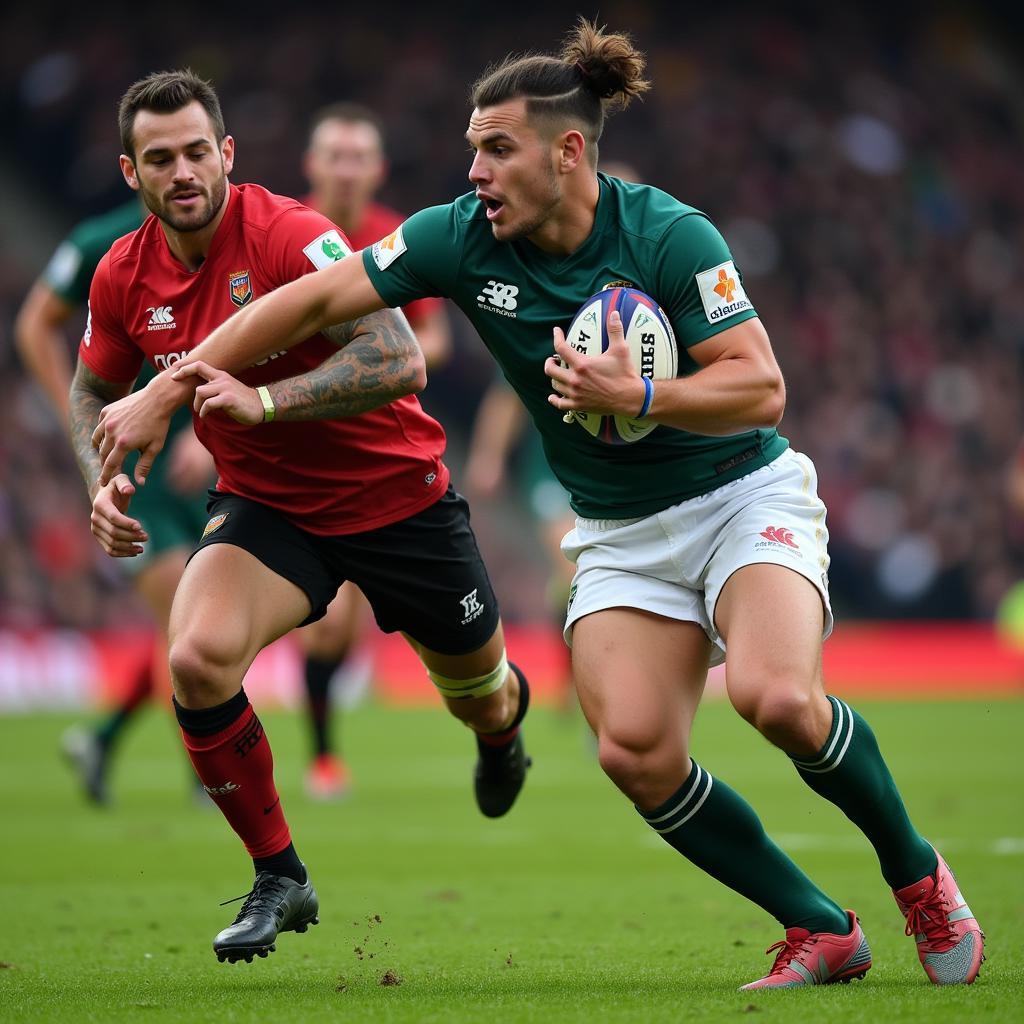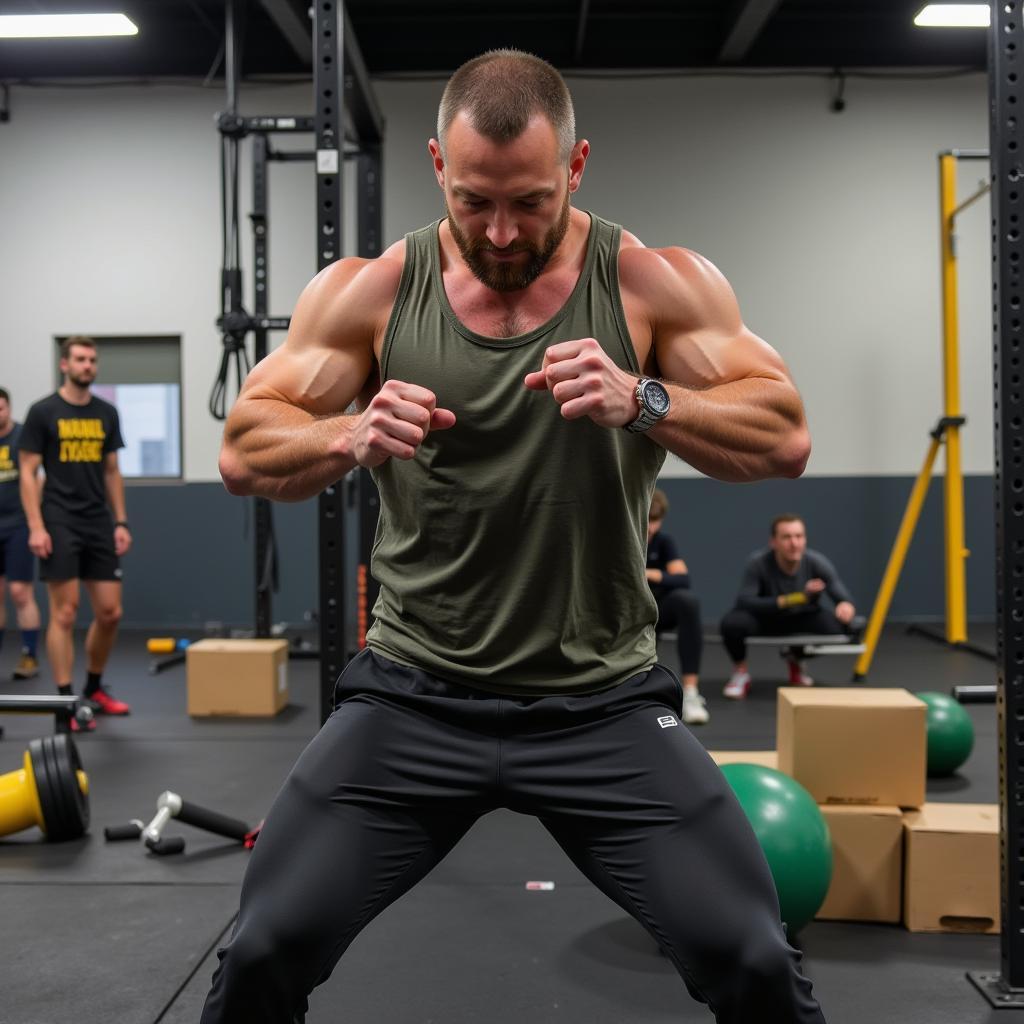Haaland Blessé: Navigating the Impact of Injuries on His Game
October 21, 2024As fans, we eagerly anticipate every match Erling Haaland graces the pitch. His presence alone sends shivers down the spines of defenders, and his scoring prowess is undeniable. However, the demanding nature of professional football inevitably leads to “Haaland Blessé” becoming a phrase we encounter, albeit reluctantly.
While his talent and determination are unwavering, injuries are an unfortunate reality for even the most physically gifted athletes. These periods of absence, though challenging, offer valuable insights into Haaland’s resilience, the impact on his team, and the strategies employed to ensure his triumphant return.
The Physicality of Haaland’s Game and Injury Risks
Haaland’s playing style is a spectacle to behold. His explosive sprints, powerful shots, and relentless pressing make him a force to be reckoned with. This very physicality, while integral to his success, also exposes him to potential injuries.
 Erling Haaland executing a powerful tackle
Erling Haaland executing a powerful tackle
Muscle strains, particularly hamstrings, are a common concern for players with his explosiveness. Additionally, the high-impact nature of challenges he encounters increases the risk of ankle and knee injuries.
Decoding “Haaland Blessé”: Types and Frequency of Injuries
While specific medical details remain confidential, public information and match reports provide insight into the types and frequency of injuries Haaland has faced.
His time at Borussia Dortmund saw him sidelined with muscle injuries, notably a hip flexor issue that caused him to miss significant game time. Since joining Manchester City, he has experienced minor setbacks requiring careful management by the club’s medical staff.
The Ripple Effect: Haaland’s Absence on Team Performance
Haaland’s impact transcends mere goals. His movement, link-up play, and ability to draw defenders create space for teammates, impacting the team’s overall attacking dynamics. When “Haaland blessé” makes headlines, the effects are palpable.
 Erling Haaland celebrates a goal with his teammates.
Erling Haaland celebrates a goal with his teammates.
Teams that rely heavily on a single goalscorer, as is often the case with prolific strikers like Haaland, may struggle to adapt tactically in his absence. The opposition’s defensive approach also changes, allowing them to focus on neutralizing other threats.
Recovery and Return: A Testament to Resilience and Expertise
Behind the scenes, a team of dedicated professionals works tirelessly to facilitate Haaland’s return to peak fitness. From physios to conditioning coaches and sports scientists, no effort is spared in ensuring a safe and effective rehabilitation program.
 Erling Haaland undergoing rigorous training.
Erling Haaland undergoing rigorous training.
Haaland’s commitment to the process, his unwavering determination, and the expertise of the medical team are crucial in minimizing downtime and maximizing his chances of returning stronger.
Looking Ahead: Injury Prevention and Long-Term Success
While injuries are an unfortunate part of the game, proactive measures can mitigate risks. Tailored training regimes, focusing on strength, flexibility, and injury prevention protocols, are essential. Manchester City’s investment in sports science and data analysis undoubtedly plays a crucial role in managing Haaland’s workload and minimizing the likelihood of future injuries.
“Haaland blessé” is not a phrase fans enjoy hearing, but understanding the context, the impact, and the strategies employed to ensure his return offers a broader perspective on the challenges and triumphs inherent in professional football. As fans, we can only hope for a future where such instances are rare, allowing us to witness his extraordinary talent for years to come.
FAQ
1. What are the most common injuries for footballers like Haaland?
Muscle strains, particularly hamstrings, ankle injuries, and knee problems are common among footballers due to the high-impact nature of the sport.
2. How do teams cope with the absence of a key player like Haaland?
Tactical adjustments, utilizing squad depth, and adapting the team’s playing style are some ways teams cope with the absence of key players.
3. What role does sports science play in injury prevention and recovery?
Sports science plays a vital role in analyzing player data, optimizing training loads, and implementing injury prevention programs tailored to individual athletes.
For more insights into Haaland’s career and performance analysis, check out these articles:
- Alan Shearer on Haaland
- Shearer Haaland
- Alan Shearer Erling Haaland
- Haaland EPL Goals
- How Many Will Haaland Score
Do you want to know more about Erling Haaland’s journey, his records, or his impact on the Premier League? Explore our website for in-depth articles, exclusive interviews, and exciting updates on your favorite footballer!
Need assistance or have questions? Contact us:
Phone Number: 0396443476
Email: [email protected]
Address: 23 Thang 3, Dak Nia, Gia Nghia, Dak Nong, Vietnam
Our dedicated customer support team is available 24/7 to assist you!